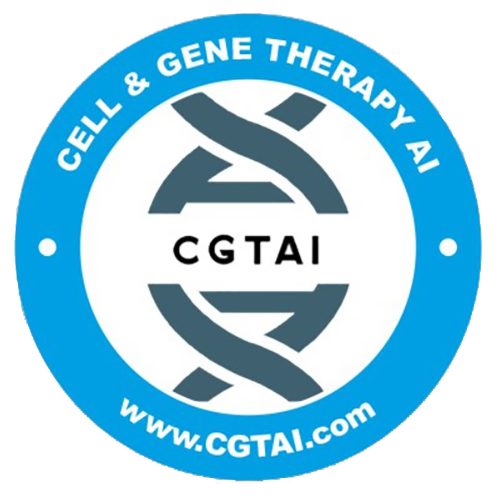What is AI
Artificial Intelligence (AI) is a branch of computer science that aims to create machines that can perform tasks that normally require human intelligence. The goal of AI is to create intelligent machines that can reason, learn, perceive, and communicate like humans.
AI can be broadly divided into two categories: narrow AI and general AI. Narrow AI, also known as weak AI, is designed to perform a specific task, such as playing chess or driving a car. General AI, also known as strong AI or artificial general intelligence (AGI), is designed to perform any intellectual task that a human can do.
AI has been around for several decades, but it is only in recent years that it has become more accessible and powerful. This is due to the increasing availability of data, computational power, and advances in algorithms.
There are several different approaches to AI, including rule-based systems, machine learning, and neural networks. Rule-based systems use a set of if-then statements to perform a specific task. Machine learning, on the other hand, uses algorithms to automatically learn patterns from data, and can be divided into supervised learning, unsupervised learning, and reinforcement learning. Neural networks, which are modeled after the human brain, use interconnected nodes to process information.
AI has a wide range of applications across various industries, including healthcare, finance, and transportation. In healthcare, AI is being used to develop more accurate diagnoses, personalized treatment plans, and drug discovery. In finance, AI is being used to analyze financial data and make predictions about market trends. In transportation, AI is being used to develop self-driving cars and optimize traffic flow.
However, there are also concerns about the impact of AI on society. Some experts warn about the potential loss of jobs as AI becomes more advanced and replaces human workers in certain industries. There are also concerns about the ethical implications of AI, such as the potential for biased algorithms and the development of autonomous weapons.
Despite these concerns, AI has the potential to revolutionize the way we live and work. As AI technology continues to advance, it is important to carefully consider its impact on society and work to ensure that it is used for the greater good.
What is AGI
Artificial General Intelligence (AGI) refers to a hypothetical type of artificial intelligence that would be capable of performing any intellectual task that a human can do. Unlike current artificial intelligence (AI) systems, which are designed to perform specific tasks, AGI would possess a level of cognitive flexibility and adaptability that would allow it to learn and reason across multiple domains.
While AGI remains a hypothetical concept, it has been the subject of much speculation and debate within the field of AI research. Some experts believe that AGI will be the next major breakthrough in AI, paving the way for a world where machines can think, reason, and communicate like humans. Others, however, are more cautious, pointing out the significant challenges and ethical considerations involved in creating an AGI system.
One of the main challenges in developing AGI is achieving a level of cognitive flexibility and adaptability that would allow machines to learn and reason across multiple domains. Currently, most AI systems are designed to perform specific tasks, such as playing a game or recognizing objects in an image. These systems are typically trained on large datasets using machine learning algorithms, but they are limited in their ability to transfer knowledge from one domain to another.
To achieve AGI, researchers would need to develop algorithms that are capable of learning from a wide range of data sources and applying that knowledge to new situations. This would require significant advances in fields such as natural language processing, computer vision, and robotics, as well as the development of new approaches to machine learning and reasoning.
Another challenge in developing AGI is ensuring that machines are able to reason ethically and make decisions that align with human values. As AI systems become more advanced, they will be increasingly called upon to make complex decisions that have significant social and ethical implications. For example, an AGI system tasked with managing a healthcare system would need to be able to balance competing priorities, such as patient outcomes, cost-effectiveness, and privacy concerns.
To address these challenges, researchers are exploring a variety of approaches to AGI development. Some are focused on creating algorithms that are more adaptable and flexible, while others are exploring new models of human-machine interaction that allow machines to learn from human feedback and input. Still, others are exploring ethical and governance frameworks that can help ensure that AGI systems are developed and used in ways that align with human values.
While the development of AGI remains a long-term goal, it is clear that AI systems are already having a significant impact on our world. From self-driving cars to virtual assistants, AI is already changing the way we live and work, and the pace of progress is only accelerating. As AI systems become more advanced and capable, it is essential that we continue to explore the ethical, social, and technical implications of this technology, and work to ensure that it is developed in ways that benefit all of humanity.
Brain mapping and AGI
Brain mapping and artificial general intelligence (AGI) are two fields that are rapidly advancing and have the potential to revolutionize our understanding of the brain and the development of intelligent machines. Brain mapping is the process of creating a comprehensive map of the brain, including its structure and function, while AGI refers to the development of intelligent machines that can perform any intellectual task that a human can.
The human brain is one of the most complex and mysterious organs in the body. It is made up of billions of neurons, each of which can connect with thousands of other neurons to form intricate networks. The study of brain mapping has made significant progress in recent years, thanks to advancements in technology such as magnetic resonance imaging (MRI), functional MRI (fMRI), and electroencephalography (EEG). These techniques allow researchers to study the brain in detail and understand how different regions of the brain are connected and communicate with each other.
One of the most significant breakthroughs in brain mapping has been the creation of the Human Connectome Project, which aims to map the neural connections in the human brain. The project has already produced some remarkable results, including the discovery of new brain regions and the identification of previously unknown connections between different parts of the brain.
The field of AGI, on the other hand, is focused on developing machines that can perform any intellectual task that a human can. Unlike narrow AI, which is designed to perform a specific task such as playing chess or recognizing faces, AGI is intended to be a general-purpose intelligence that can adapt to any task or situation.
AGI researchers are attempting to create intelligent machines that can learn and reason like humans, using techniques such as deep learning and reinforcement learning. These machines could potentially revolutionize many industries, including healthcare, transportation, and finance, by automating complex tasks and improving efficiency.
The intersection of brain mapping and AGI has the potential to be transformative. By mapping the neural connections in the brain, researchers can gain insights into how human intelligence works and use that knowledge to inform the development of AGI. Conversely, AGI could be used to simulate and study the brain, allowing researchers to test theories and models in a virtual environment.
For example, AGI could be used to create virtual models of the brain that simulate the behavior of individual neurons or entire brain regions. These models could help researchers understand how different parts of the brain work together to produce complex behaviors and cognitive processes.
Similarly, brain mapping could inform the development of AGI by providing insights into the structure and function of the brain. By understanding how the brain processes information, AGI researchers could create machines that mimic those processes and perform tasks in a more human-like way.
However, there are also potential risks associated with the development of AGI. As machines become more intelligent, there is a risk that they could become uncontrollable or pose a threat to human safety. It is important for researchers to consider these risks and work to develop safe and ethical AGI.
The fields of brain mapping and AGI are advancing rapidly and have the potential to revolutionize our understanding of the brain and the development of intelligent machines. By combining the insights from these two fields, researchers could create a deeper understanding of human intelligence and develop machines that can perform any intellectual task. However, it is also important to consider the potential risks associated with AGI and work to develop safe and ethical systems.
What is brain mapping?
Brain mapping, also known as brain cartography, is the process of creating a detailed map of the human brain’s structure and function. It involves using various imaging techniques, such as magnetic resonance imaging (MRI), positron emission tomography (PET), and electroencephalography (EEG), to visualize and understand the complex architecture of the brain.
The goal of brain mapping is to provide a comprehensive understanding of how the brain works and to identify the regions that control different functions, such as movement, language, memory, and emotion. By creating detailed maps of the brain, researchers hope to gain insight into the underlying causes of neurological disorders and develop new treatments.
There are two main types of brain mapping: structural and functional. Structural brain mapping involves using imaging techniques to create a detailed picture of the brain’s physical structure, including its size, shape, and connections. Functional brain mapping, on the other hand, focuses on identifying the regions of the brain that are active during specific tasks, such as speaking or problem-solving.
One of the most widely used imaging techniques in brain mapping is MRI. MRI uses a powerful magnet and radio waves to produce detailed images of the brain’s structure. Researchers can use this technique to create high-resolution images of the brain’s anatomy, allowing them to identify and locate specific structures within the brain.
PET is another imaging technique used in brain mapping. PET involves injecting a radioactive tracer into the bloodstream and then using a scanner to detect the tracer as it moves through the brain. This technique allows researchers to visualize the metabolic activity of different regions of the brain, providing insights into how the brain processes information.
EEG is a non-invasive technique used to measure the electrical activity of the brain. During an EEG, electrodes are placed on the scalp, and the electrical activity of the brain is recorded. This technique can be used to identify the regions of the brain that are active during specific tasks, such as reading or listening to music.
Brain mapping has a wide range of applications in medicine and neuroscience. For example, it can be used to identify the regions of the brain that are affected by neurological disorders such as Alzheimer’s disease, Parkinson’s disease, and epilepsy. By understanding how these disorders affect the brain, researchers can develop new treatments that target specific regions of the brain.
Brain mapping is also used in the field of neurosurgery. Surgeons can use brain mapping to identify the regions of the brain that control critical functions such as movement, speech, and vision. By doing so, they can avoid damaging these regions during surgery and minimize the risk of post-surgical complications.
Brain mapping is an essential tool for understanding the structure and function of the human brain. By creating detailed maps of the brain, researchers can gain insight into how the brain processes information and identify the regions that control different functions. This knowledge has important implications for medicine, neurosurgery, and the development of new treatments for neurological disorders.
Would brain mapping and AGI make us immortal?
The concept of immortality has fascinated humans for centuries, with many seeking to achieve it through various means, such as religion, science, and technology. With the rapid advancements in neuroscience and artificial intelligence (AI), there is a growing belief that brain mapping and the development of artificial general intelligence (AGI) could lead to immortality. In this article, we will explore the potential of these technologies and the impact they could have on human life.
Brain mapping is the process of identifying and mapping the structure and function of the brain. This involves creating a detailed map of the neurons, synapses, and other structures in the brain, and using this information to understand how the brain works. With the development of advanced imaging technologies, such as functional magnetic resonance imaging (fMRI), it has become possible to study the brain in unprecedented detail.
The potential of brain mapping for achieving immortality lies in its ability to identify and understand the underlying causes of various brain disorders and diseases. By mapping the brain of healthy individuals and comparing it to those with neurological disorders, such as Alzheimer’s or Parkinson’s disease, researchers can identify the specific areas of the brain that are affected. This knowledge could lead to the development of new treatments and therapies that could slow down or even reverse the damage caused by these disorders, ultimately extending our lifespan.
Another aspect of brain mapping that could contribute to immortality is the ability to create a digital replica of a person’s brain. This digital replica, or brain emulation, would be a complete and accurate representation of a person’s brain, including all of its neurons, synapses, and connections. This emulation could be uploaded to a computer or a robot, allowing a person to live beyond their physical body. This concept, known as mind uploading, has been the subject of science fiction for decades but is becoming increasingly feasible with advancements in technology.
The development of AGI is also seen as a potential avenue for achieving immortality. AGI refers to the development of AI systems that can perform any intellectual task that a human can. Unlike narrow AI, which is designed to perform specific tasks, AGI would be capable of learning and adapting to new situations, making it a powerful tool for solving complex problems.
One of the ways that AGI could contribute to immortality is through the development of personalized medical treatments. By analyzing a person’s genetic information, medical history, and other data, an AGI system could develop personalized treatment plans that are tailored to the individual’s specific needs. This could lead to the development of treatments that are more effective and have fewer side effects, ultimately extending our lifespan.
Another way that AGI could contribute to immortality is by creating virtual assistants that can help us manage our health and well-being. These virtual assistants could monitor our vital signs, remind us to take our medication, and provide us with personalized health advice. Over time, these assistants could learn more about us and become better at predicting our health needs, ultimately helping us to live longer and healthier lives.
While the potential of brain mapping and AGI for achieving immortality is exciting, it is important to remember that there are also ethical and philosophical considerations to be taken into account. For example, what would be the impact on society if only a select few could afford to upload their minds to a computer? Would it be ethical to create digital copies of people without their consent? These are complex issues that will require careful consideration and debate.
Neuroscience
Earlier work has shown that people are better at perceiving touch patterns than would be predicted by the size of the receptive fields in the fingertips and the spacing between them. These results provide an explanation for why this might be: While a neuron with multiple sensitive zones is only capable of signaling touch stimuli within its own receptive field, neighboring cells with overlapping fields would provide touch sensations with a higher resolution.
Pruszynski and Johansson suspect that the same nerve endings might perform other complex computations that are currently attributed to the brain, such as signaling information about object curvature and motion direction, and are now carrying out further experiments to see if this is the case. “Another line of research is more theoretical,” says Pruszynski. “We’d like to get a better handle on how feature extraction [in the fingertips] helps the brain do its job.”
Pruszynski adds that the new findings may also have implications for rehabilitation. “If you are working towards regrowing peripheral nerves in people with nerve injury, it is important to consider not just how many neurons grow back, but also how they grow back, as this may be critical to the type of information they send the brain.”
Reference:
Pruszynski, J. A. & Johansson, R. S. (2014). Edge-orientation processing in first-order tactile neurons. Nature Neurosci. doi: 10.1038/nn.3804
Conclusion
Brain mapping and AGI have the potential to revolutionize the way we approach health and well-being, and could ultimately lead to the achievement of immortality. However, there are also important ethical and philosophical considerations to be taken into account. As we continue to explore the potential of these technologies, it is important that we do so in a responsible and thoughtful way, taking into account the potential risks and benefits
ADVERTISEMENT
If you found this article insightful and want similar articles written for your own site please use the button below to contact us.
#ai #agi #brainmapping #minduploading #neurons #immortality #synapses #robotics #robot #neurologicaldisorders #eeg #pet #fmri






















